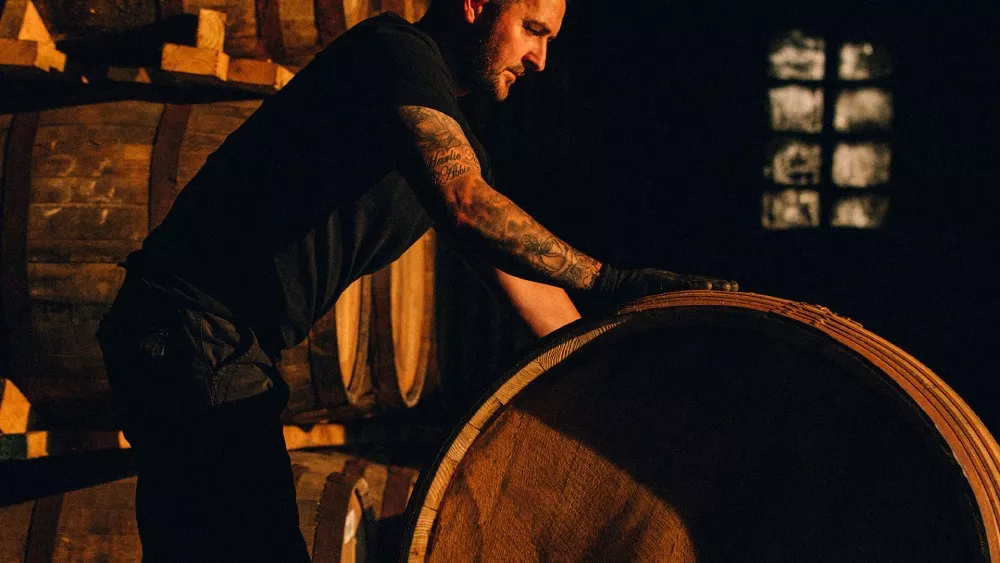


Ardray is committed to responsible drinking. You must be of legal purchase age to enter this website.
By visiting this website, you are agreeing with our Terms and Conditions, Privacy Policy, and Cookie Policy.
Single Malt Scotch vs Blended Whisky

Authors: Neil Ridley & Joel Harrison, Caskstrength Creative.
IT’S A QUESTION WHICH HAS LONG BEEN DEBATED BETWEEN WHISKY FANS, BLOGGERS, INFLUENCERS AND ENTHUSIASTS AROUND THE GLOBE
WHAT ARE THE MAJOR DIFFERENCES BETWEEN THESE ICONS OF THE WHISKY WORLD AND IS THERE A CLEAR ‘WINNER’?
When it comes to Scotch whisky styles there are three distinct elements to consider: complexity, balance and versatility - all of which come into play when looking at this highly diverse, subjective and flavoursome category.
For many whisky drinkers, single malts represent the pinnacle of quality; a spirit with refinement and prestige, the ‘single’ in the title carrying a certain purity and singular beauty all of its own, which needs no accompaniment. Single malt Scotch whiskies are, by their very nature, distilled at a single distillery location in Scotland. Once matured, the character or ‘house style’ is distinct and beguiling; the complexity coming from not only the cask type, but also the craftsmanship of the distiller, the size and shape of the copper stills and also the production methods employed in the whisky making process.
In contrast, blended Scotch whiskies derive both complexity and balance from their distinct component parts. At the heart of every blended Scotch is a rich tapestry of single malt whiskies from different Scotch distilleries, each one possessing a different style, flavour profile, age and cask type, expertly brought together by a master blender. This finely curated recipe of single malts is also combined with a proportion of Scotch grain whisky, a lighter, sweeter, often more floral and honeyed style of whisky, which helps to marry together and bring harmony to the malts.
SINGLE MALTS REPRESENT A CELEBRATION OF A DISTINCT LOCATION OR DISTILLERY, BLENDED SCOTCH WHISKY HIGHLIGHTS THE BEAUTY OF DIVERSITY AND MULTIPLE PERSONALIST STYLES

In many respects you could consider a single malt as a solo performer; powerful and distinct enough to carry off a remarkable performance on its own. Truly great blended Scotch whiskies are often thought of as a symphony of flavour: each component part working in harmony with the next, bringing something unique to the performance, with the master blender ‘conducting’ each layer to bring a consistent, beautifully balanced and dynamic performance: the ultimate Scotch whisky experience.
On the eve of the 20th century, blended Scotch rose in popularity partly because single malts at the time were often heavy, oily/smoky in character and inconsistent in style, meaning that one cask differed in flavour to the next. Whisky blenders - traditionally local grocery stores, (who also offered blends of tea and coffee,) began to bring these disparate casks together, creating blends that gave the consumer not only smoothness, but also the same flavour profile which they could trust time and time again. The history of Scotch whisky was about to change forever.
A small handful of noted malts of character from the Highlands, Islands, Speyside and Campbeltown, each distilled in copper pot stills, were blended to create new - and in many cases - highly enduring recipes, which, when combined with grain whisky - distilled in more modern, efficient column stills - gave rise to some of the more memorable Scotch whisky brand names still popular today. Ironically, single malt whisky was seldom bottled by individual distillers, who primarily saw it as a crucial building block to help fashion the recipes of blended whisky brands, which were rapidly conquering the globe, rather than being players in their own right.
However during the mid 20th century, certain distillers began to realise the wonderful singularity of their whiskies and the rise of single malts began. Drinkers enjoyed the richness of malt whiskies and the sheer diversity and distinctness of different distillery styles and whisky regions: from sweet, heathery and honeyed Speyside single malts, to the warmer, smokier and peaty whiskies from the islands of Islay, Orkney and Skye.


Blended whiskies were often bottled without the need to show an age statement because it sometimes constrained the skills of the master blender and the casks they had access to for their recipes. In contrast, single malts celebrated the incredible flavours which long maturation in an oak cask brings and soon, single malt whiskies aged 10 years, 12 years, 15 years, 18 years and even older were revered for their glorious, unrivalled flavour.
Today, blended Scotch whisky is celebrated for its incredible versatility. With a mixer such as soda water, ginger ale, lemonade or tonic, or in cocktails, blended Scotch whisky becomes refreshing and lighter on the palate, accentuating sweet, smoky, floral and citrus notes. Increasingly though, blended whiskies, such as ARDRAY, have been crafted to be enjoyed just as the blender intended: to admire the richness deep within. Over ice, ARDRAY’s multiple, highly layered flavours are slowly unlocked and an additional dash of water often helps the drinker to identify its cherished textures.
SO WHICH ONE IS BETTER? SINGLE MALT SCOTCH WHISKY, OR BLENDED SCOTCH WHISKY? REALLY, IT IS IMPOSSIBLE TO SAY.
There’s no doubt that single malts have helped bring greater global attention to Scotch whisky, but equally, over 90% of the world’s exports of Scotch are blended whiskies, showing the sheer enjoyment, versatility and continued quality of blended Scotch. The real answer lies in your own personal preference; the mood you’re in; the company you happen to be with and the moment you are toasting. Sometimes there’s nothing like a single malt in certain instances, but also the majesty of a blend is truly unmatched in the right circumstances.
Authors: Neil Ridley & Joel Harrison, Caskstrength Creative.



